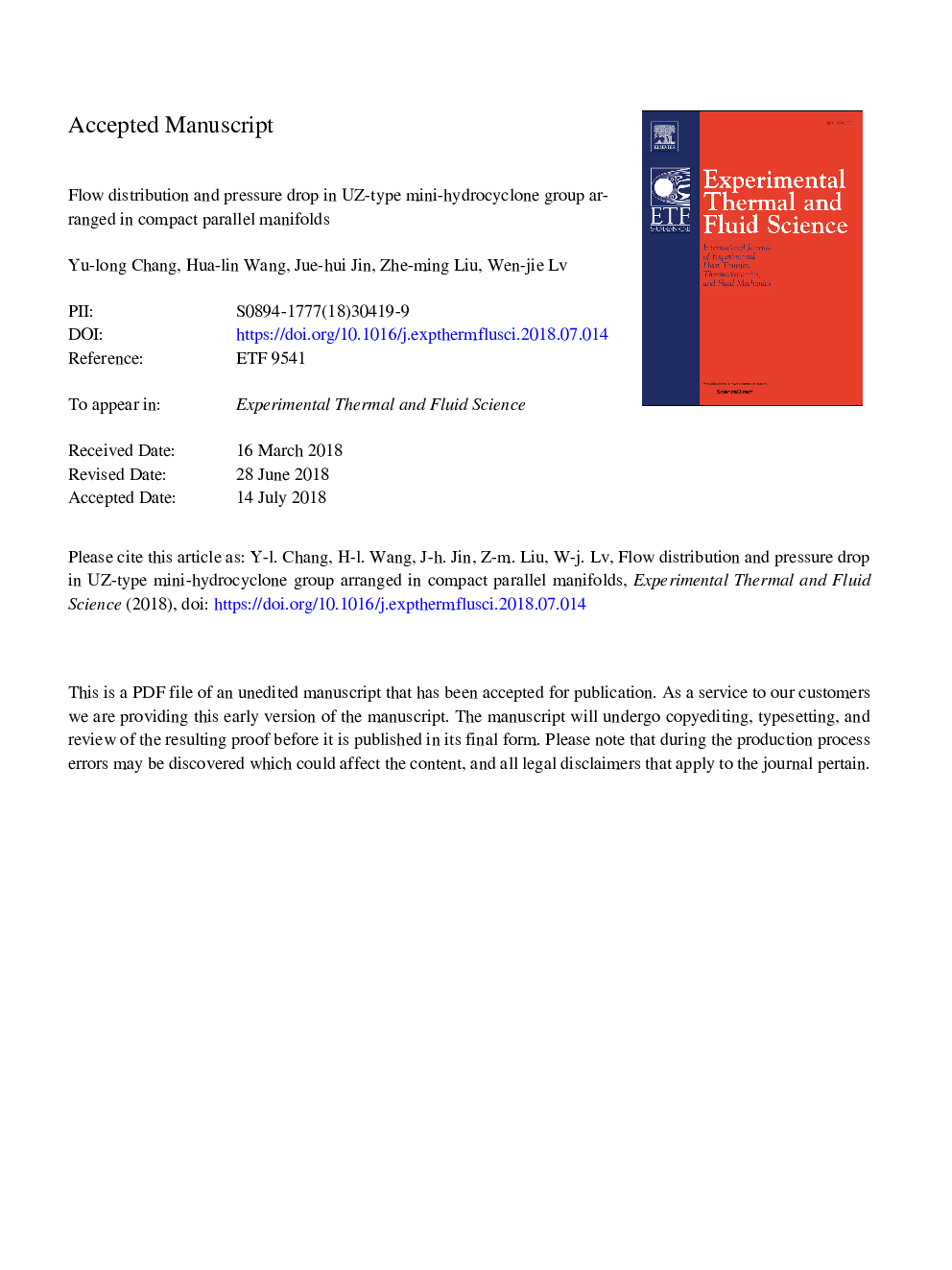| Article ID | Journal | Published Year | Pages | File Type |
|---|---|---|---|---|
| 10139839 | Experimental Thermal and Fluid Science | 2019 | 33 Pages |
Abstract
Mini-hydrocyclones have commonly been used for high precision separation due to structural simplicity and having no moving parts. When they are placed in parallel, their throughput capacity can increase significantly for large industrial applications. Flow uniformity is closely correlated with separation performance. In this study, we developed a discrete model of a UZ-type mini-hydrocyclone group. What's more, Separation experiments were performed for mini-hydrocyclone groups in ZZ-, UU-, and UZ-type arrangements. The results of the discrete model were compared to the experimental data. It was found that higher flow uniformity could be obtained with a lower split ratio or shorter inlet header length. Meanwhile, a larger head loss or flow distribution coefficient usually resulted in better uniformity in the outlet velocity of the manifold and less uniformity in the pressure drop. The UZ-type mini-hydrocyclone group was less maldistributed than the other arrangements under identical geometrical conditions and operational parameters. This study provides a guideline for designing arrangement of parallel mini-hydrocyclone groups in compact parallel manifolds.
Keywords
Related Topics
Physical Sciences and Engineering
Chemical Engineering
Fluid Flow and Transfer Processes
Authors
Yu-long Chang, Hua-lin Wang, Jue-hui Jin, Zhe-ming Liu, Wen-jie Lv,
